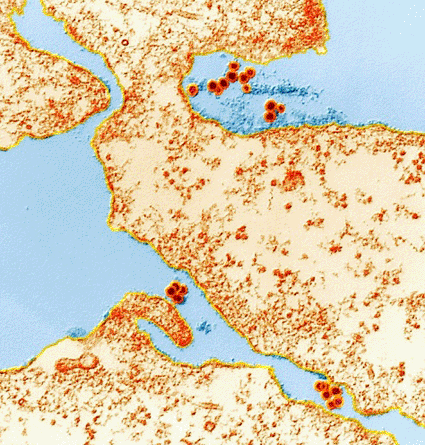Mouse Studies Help Map Pathway of Immune Signaling in West Nile Encephalitis
By LabMedica International staff writers
Posted on 16 Feb 2009
Results from a study conducted with a series of genetically engineered mice have enabled researchers to trace the molecular pathway used by the immune system to protect the brain during infection by the West Nile Fever virus.Posted on 16 Feb 2009
West Nile virus (WNV) is a single-stranded RNA (ssRNA) Flavivirus that is transmitted by mosquitoes to birds, horses, and other animals including man. To explain the defensive strategy employed by the immune system when confronted by this virus, investigators at Cedars-Sinai Medical Center (Los Angeles, CA, USA) and Yale University (New Haven, CT, USA) began by looking at a component of the innate immune system called Toll-like receptor 7 (Tlr7). This molecule is one that recognizes pathogens entering the body and activates appropriate signaling molecules that modulate the immune cell response.

Image: Colored transmission electron micrograph (TEM) of West Nile virus (WNV) particles (red/orange dots) with host cells. The WNV belongs to the group of flaviviruses, and causes encephalitis in humans (Photo courtesy of the Eye of Science).
By using a series of mice that were genetically engineered to lack specific signaling molecules the investigators showed that effective signaling depended on the protein interleukin-23 (IL-23), a potent inflammatory response stimulator. Mice that lacked either Trl7 or IL-23 had increased susceptibility to lethal WNV encephalitis. Despite increased tissue concentrations of most innate cytokines, leukocytes and macrophages failed to home to WNV-infected cells and, therefore, did not clear the virus from brain tissue. These findings were published in the February 5, 2009, online edition of the journal Immunity.
"There is no approved therapy for West Nile encephalitis in humans, in part because the mechanisms of the immune response to the virus are not completely understood. Our results suggest that drug therapy aimed at promoting this signaling pathway may enhance the immune response and thereby promote clearance of this potentially deadly virus," said first author Dr. Terrence Town, associate professor of neurosurgery at Cedars-Sinai Medical Center.
Related Links:
Cedars-Sinai Medical Center
Yale University













